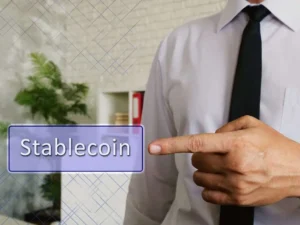Proof of Space-Time (PoST) is an innovative consensus protocol that makes it necessary for participants to provide convincing proof of their activity. The piece of evidence proves they stored specific data over a certain period. Classic models require users to solve advanced puzzles using computational resources to earn an incentive. In contrast, the PoST system awards miners for keeping data on their devices. In this guide, we will delve into the main upsides to implementing this approach and analyze whether its effectiveness will lead to widespread adoption.
How Proof of Spacetime Works?
As an alternative to Proof of Work (PoW), PoST allows networks to utilize a new participatory model. The protocol relies on the scarcity of physical storage. Every person with access to a PC can join the network, ensuring its sustainability and stability. The coins are distributed between all individuals regardless of the stake.
Miners can solve two hash puzzles if they prove they stored them over a specific period. Participants join at any time without worrying about any illicit agreement between asset holders that may disrupt the functioning of the system. The main goal of PoST is to facilitate the creation of a safe crypto environment where everyone can freely participate in mining.


Turnkey Brokerage Solution For Your Business
Get the most profitable fully licensed fx/crypto brokerage software or ready-to-operate business in 48 hours. Best-in-class web & mobile trading platforms, sales-driven CRM, full integration with MT4/5, and 150+ payment providers.
How Does the PoST Confirm that Given Data is Stored Over Time?
When solving the WinningPoSt puzzle, a randomly selected miner must quickly provide a copy of the stored network data to confirm they store it on their PC. They must meet a tight deadline to cope with the challenge. Solving the WindowPoSt puzzle requires providing blockchain data at specific intervals. The first Proof of Space-Time challenge verifies data when a person is selected to mine the next block. The second one confirms they do not delete data.

Pros and Cons of PoST
Proof of space and time was developed to award individuals who store information without deleting it. Participants lock up their holdings to stabilize the network. Cryptocurrency developers utilize the protocol due to the following advantages:
- No entry barriers. Every person with a hard drive can participate in the project without making significant investments.
- Affordable equipment. There is no need to upgrade storage devices regularly.
- Enhanced security. It’s too expensive to disrupt PoST operations by impacting reserved space.
However, the proof of spacetime model has notable shortcomings:
- A limited number of projects. Only some blockchains adopted the method, including Chia and Filecoin.
- Malware risks. If a computer gets infected, it may disrupt mining or timestamping.
- Energy consumption. Widespread adoption is likely to impact storage drive prices and result in the development of less resource-efficient models.
The space and time crypto mechanism was introduced to streamline token generation and ensure active user participation for a long period.
Difference Between Proof-of-Capacity and Proof-of-Spacetime
Developers want to create scalable networks and spend fewer resources on validating transactions. Traditional governance formats are hardly feasible today, as they remain resource-consuming.
If one compares proof of stake vs proof of space and time, they will see that the former model requires participants to stake their tokens to validate operations on the blockchain. The latter is a democratic approach, as it incentivizes those who store network data diligently.
The juxtaposition between proof of capacity (PoC) and PoST shows they deploy a similar consensus mechanism. Participants get rewards for their efforts. Validators in PoC must utilize their hard drive space to verify and confirm operations. Storage miners in the PoST model have to provide solid proof of storing info when they are randomly selected to validate transactions.
The Filecoin blockchain famously relies on PoST procedures, allowing its supporters to achieve consensus without using centralized solutions. In other protocols, people with a lot of coins are more privileged and have a lot of impact on the development of a project. The Proof of Space-Time method offers an innovative trustless way of governing the network, which explains the interest of institutional investors in the projects deploying this mechanism.






